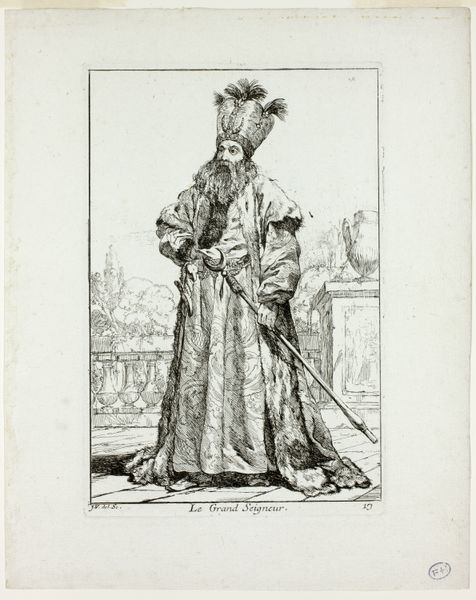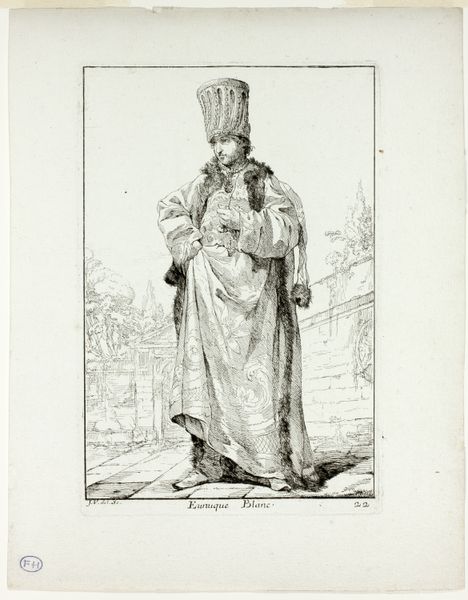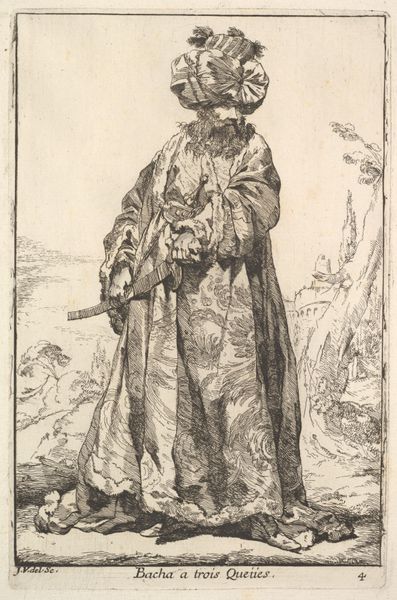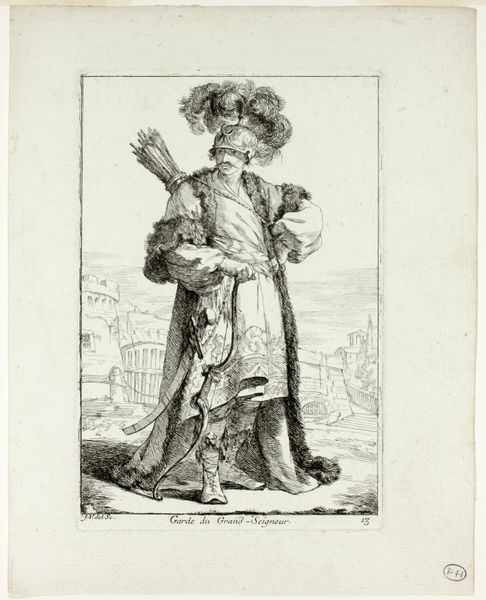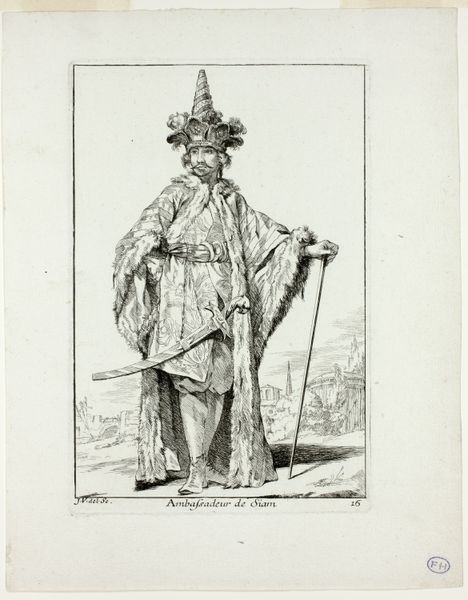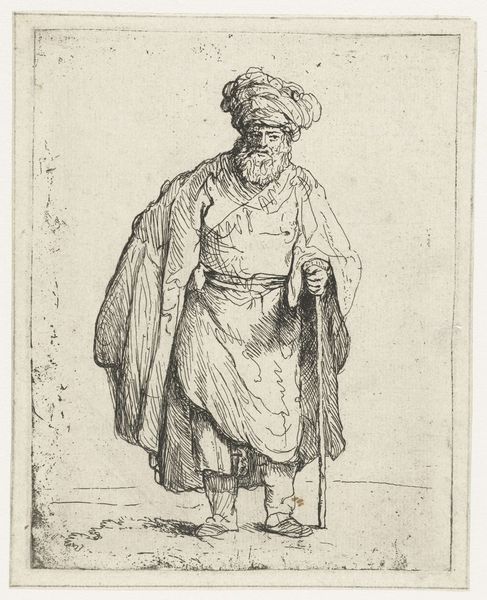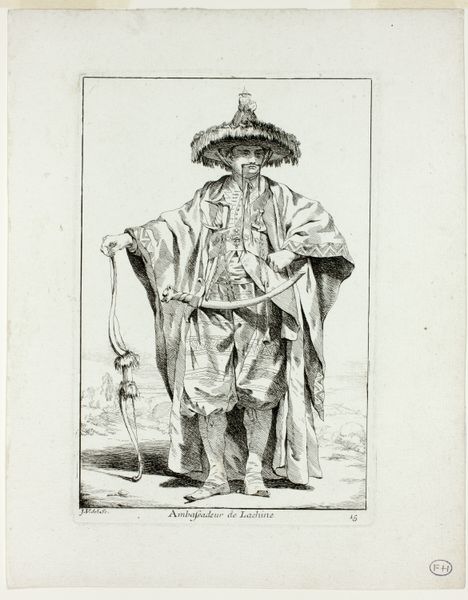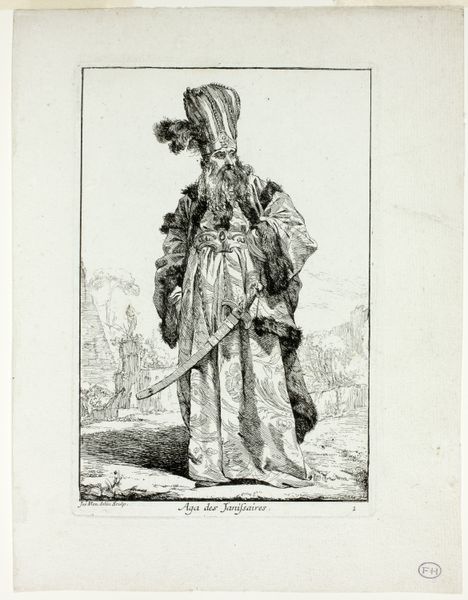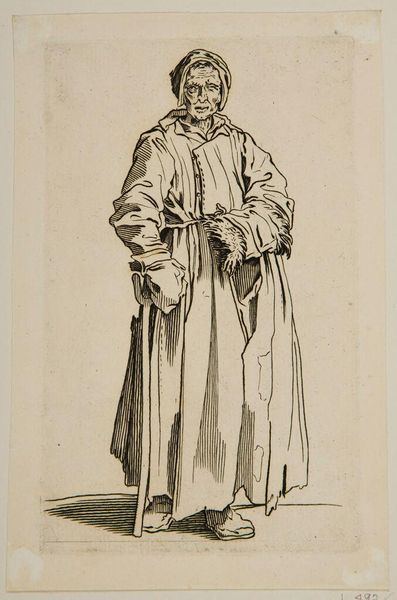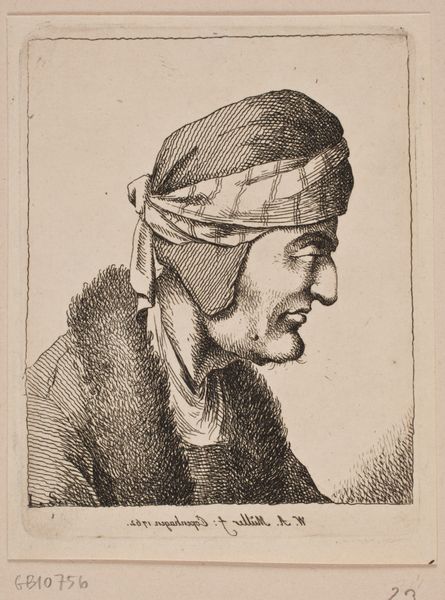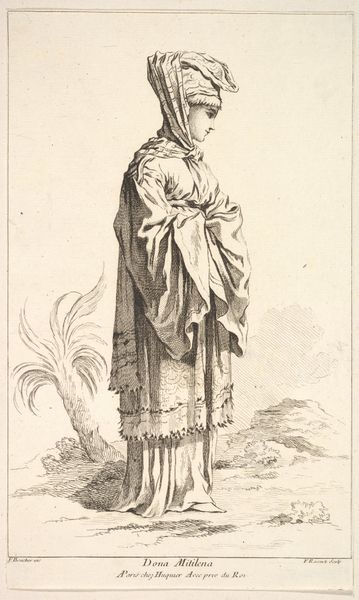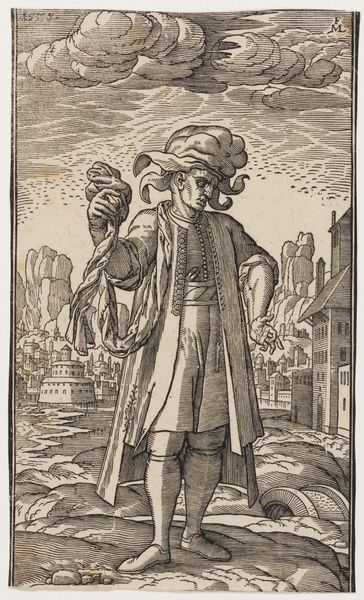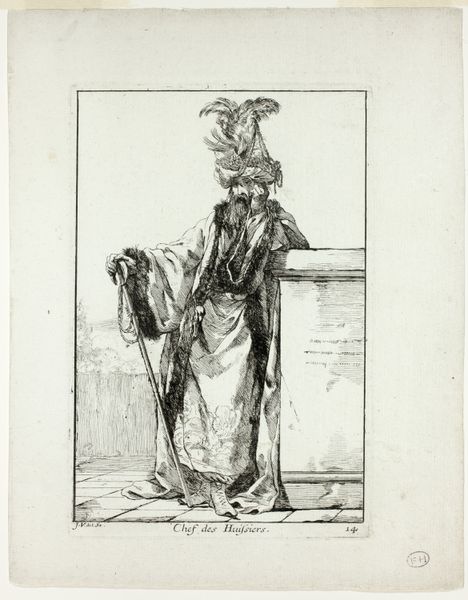
Bacha d'Égypte, plate six from Caravanne du Sultan à la Mecque 1748
0:00
0:00
drawing, print, etching, paper, engraving
#
portrait
#
drawing
# print
#
etching
#
paper
#
orientalism
#
engraving
Dimensions: 195 × 132 mm (image); 205 × 136 mm (plate); 265 × 210 mm (sheet)
Copyright: Public Domain
Joseph Marie Vien created this print, *Bacha d'Égypte,* as part of a series called *Caravanne du Sultan à la Mecque.* Vien was a French artist working in the 18th century, a time when Europe was fascinated by the "Orient," often portraying it through a lens of romanticism and exoticism. This image presents a figure identified as a "Bacha," or Pasha, of Egypt, a high-ranking official under Ottoman rule. Vien, who had traveled to Rome, was interested in the visual cultures of the Ottoman Empire, likely informed by the visual cultures he studied. The Pasha is adorned in elaborate garments which signal wealth and status. Consider the complexities of representation at play here: how does Vien, as a European artist, depict a figure from a different cultural and political context? The print invites us to reflect on the power dynamics inherent in such depictions. How does the artist negotiate the line between representation and potential misrepresentation, and what impact does this have on our understanding of both the artwork and the culture it portrays?
Comments
No comments
Be the first to comment and join the conversation on the ultimate creative platform.
